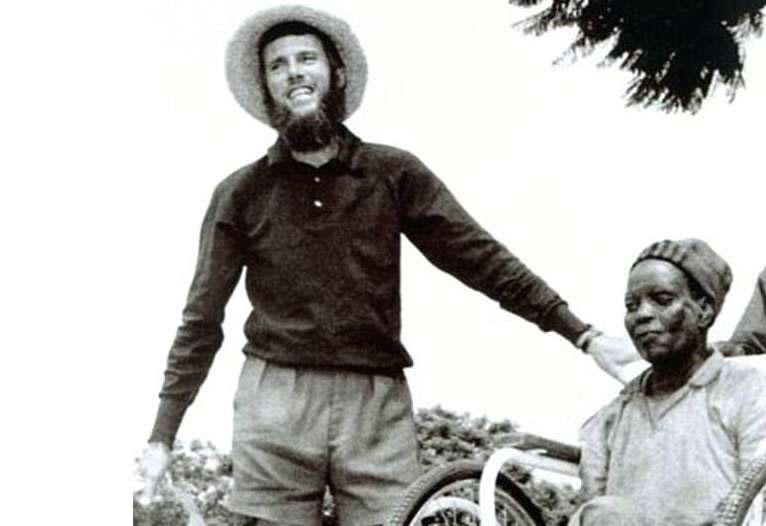Church leaders in Zimbabwe discuss beatification cause of lay missionary

John Bradburne. Photo CNA.
HARARE, ZIMBABWE: On Thursday the Catholic Church in Zimbabwe began a three-day meeting to consider the cause of canonisation of John Bradburne, a lay missionary to the area in the 1970s, who could become the country’s first canonised saint.
At the Sept. 5-7 meeting, Catholic leaders will hear arguments in favour of and against the sainthood cause of Bradburne, who was killed during the Rhodesian Bush War in 1979.
The meeting began on the 40th anniversary of Bradburne’s death and will determine whether his cause for official sainthood can proceed.
Bradburne was born in 1921 in England, the son of an Anglican clergyman. He served in the British army in World War II, and he converted to Catholicism in 1947 after staying with the Benedictines of Buckfast Abbey.
Although he wanted to become a monk at Buckfast, he had not been in the Catholic Church long enough, and so he became a wanderer throughout Europe and the Middle East, living out of one bag. He also became a prolific poet.
During his wanderings, he stayed at other Benedictine abbeys, with Carthusians, the Congregation of Our Lady of Sion, and even tried living as a hermit on Dartmoor in England. Bradburne became a Third Order Franciscan in 1956.
According to the John Bradburne Memorial Society’s website, after 16 years of wandering, Bradburne wrote to his friend Father John Dove and asked: “Is there a cave in Africa where I can pray?”
He arrived in the British colony of Southern Rhodesia (present-day Zimbabwe) in 1962, and shortly thereafter he told a Franciscan priest that he had three wishes: to serve leprosy patients, to die a martyr, and to be buried in the habit of St Francis.
Through a Jesuit friend in Southern Rhodesia, Bradburne came to serve at the Mutemwa Leper Settlement in 1969, and would spend the last 10 years of his life there.
Southern Rhodesia declared independence in 1965, and the Rhodesian Bush War was fought from 1964 to 1979 among the white minority government, the Marxist Zimbabwe People’s Revolutionary Army, and the Zimbabwe African National Union (ZANU).
ZANU was chaired from 1975 to 1980 by Robert Mugabe, who then served as prime minister of Zimbabwe from 1980 to 1987, and as president from 1987 to 2017. Mugabe died Sept. 6.
As the war intensified and ZANU guerrilla forces approached Mutemwa, Bradburne was urged to leave, but he insisted on remaining. According to The Telegraph, even after the white Catholic priests of the area had been evacuated, the white British Bradburne “refused to leave, and continued to attend to lepers, write poetry and play his harmonium in the tin hut in which he lived.”
Bradburne was abducted, and shot and killed Sept. 5, 1979. According to the Memorial Society, during Bradburne’s funeral, a pool of blood could be seen collecting beneath his coffin. After the funeral, the coffin was opened but no sign of blood could be found. However, when it was noticed that Bradburne had not been buried in a Franciscan habit, per his wishes, a Franciscan habit was brought and Bradburne was dressed in it for his burial.
According to Independent Catholic News, two people have claimed miraculous cures through Bradburne’s intercession: a woman in South African who regained the use of her legs, and a man in Scotland cured of a brain tumour.
The Jonn Bradburne Memorial Society is supporting the investigation into his life and virtues. The group was led by Bradburne’s niece, Celia Brigstocke, until her death on August 2018. Brigstocke’s eldest daughter, Kate Macpherson, now leads the efforts.


